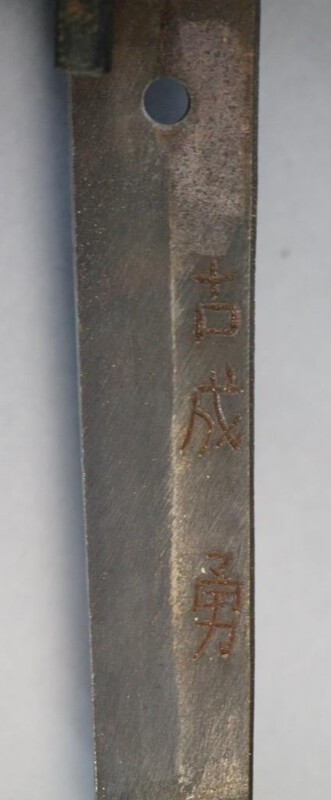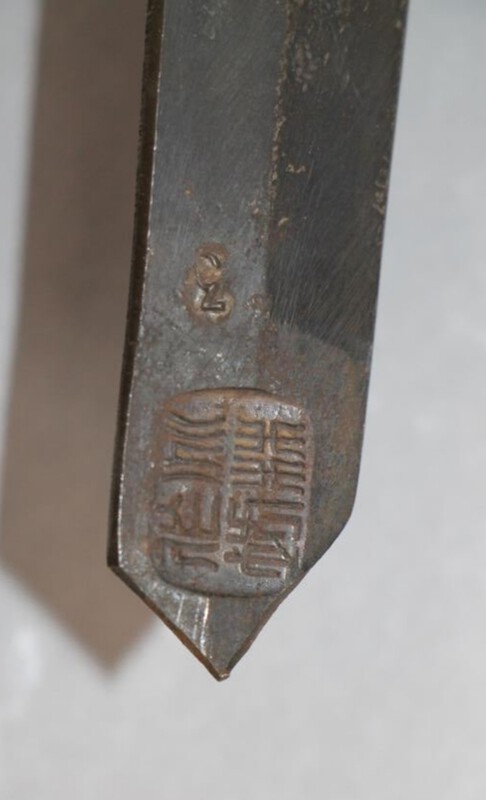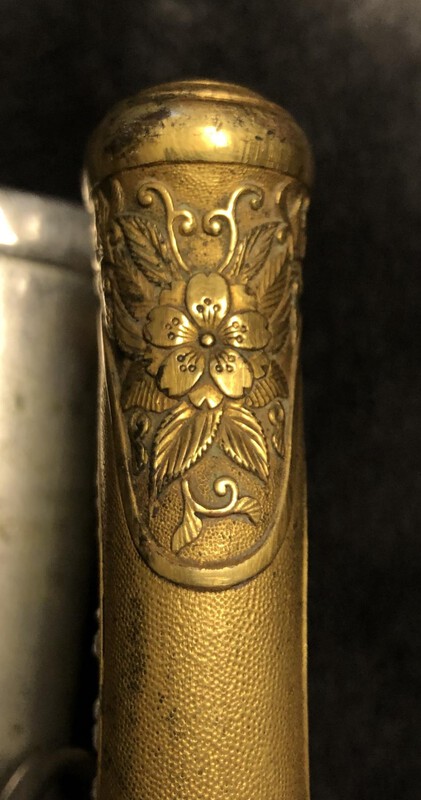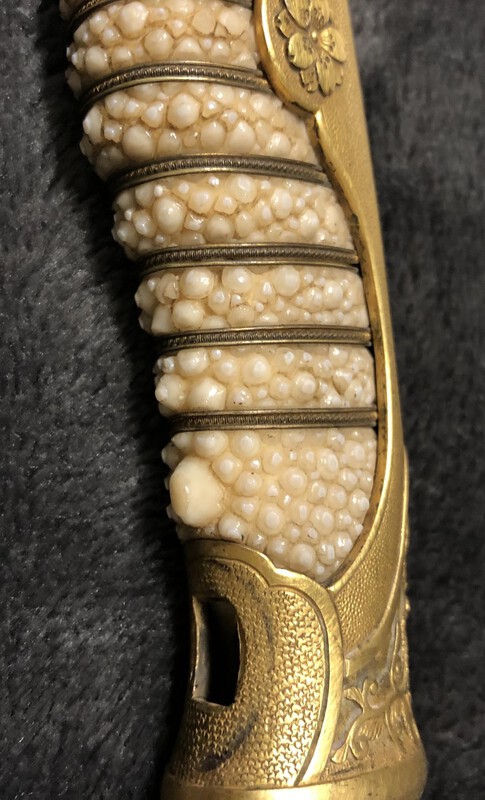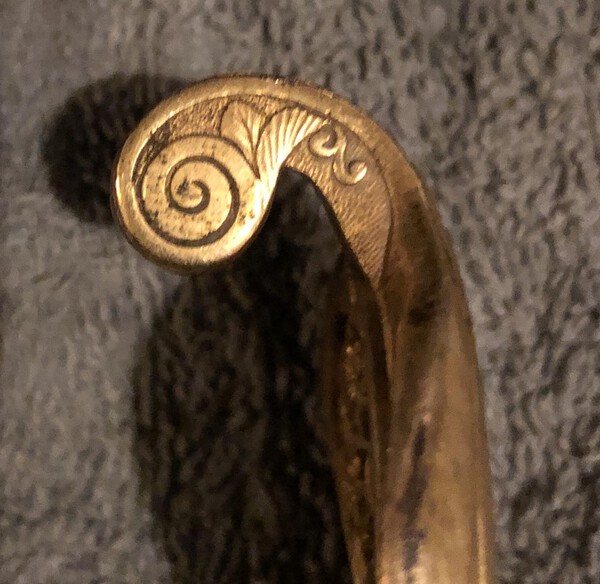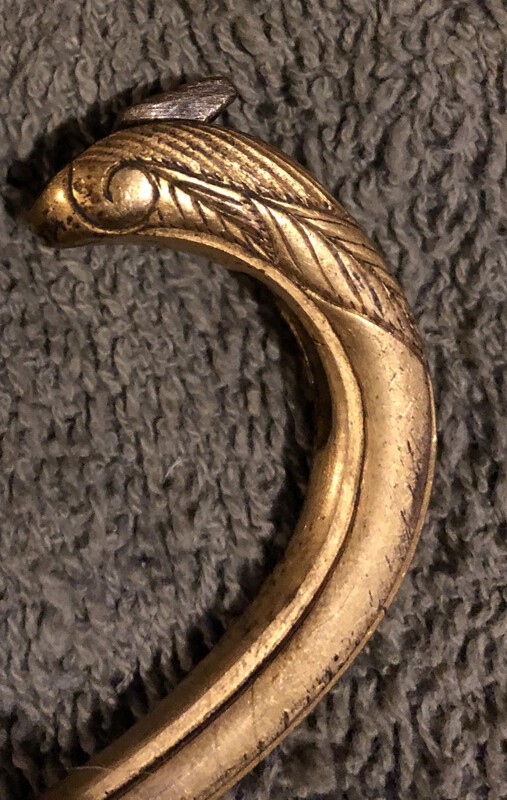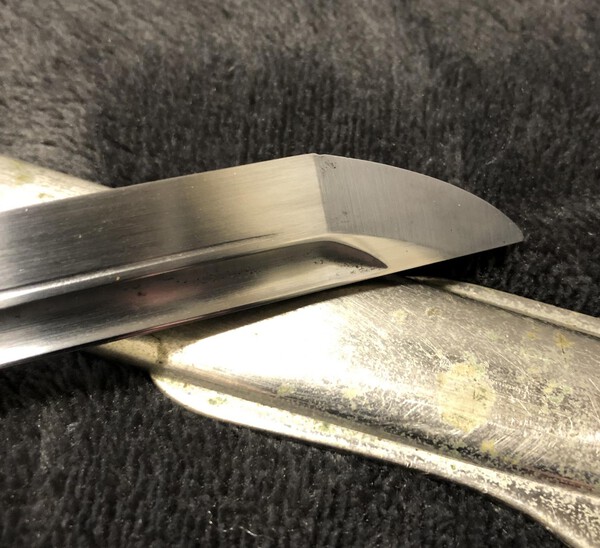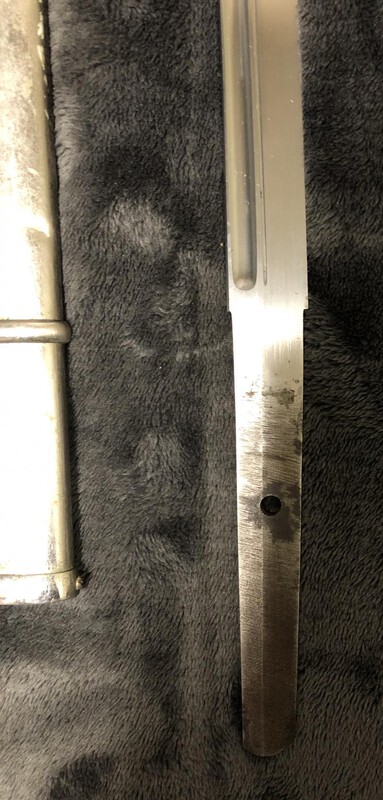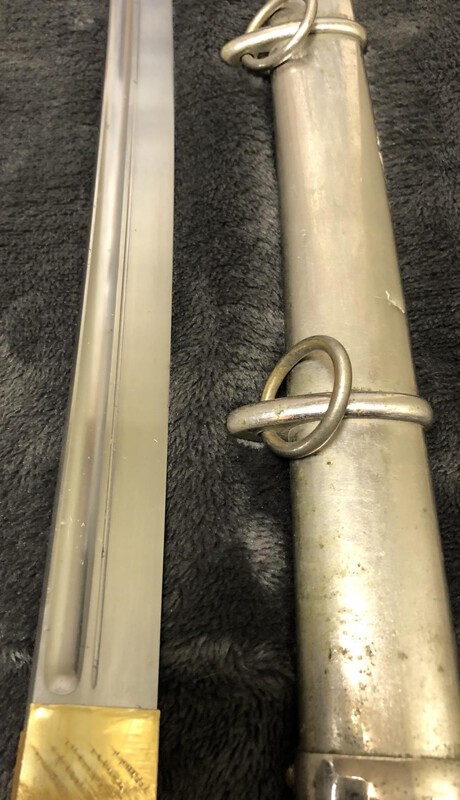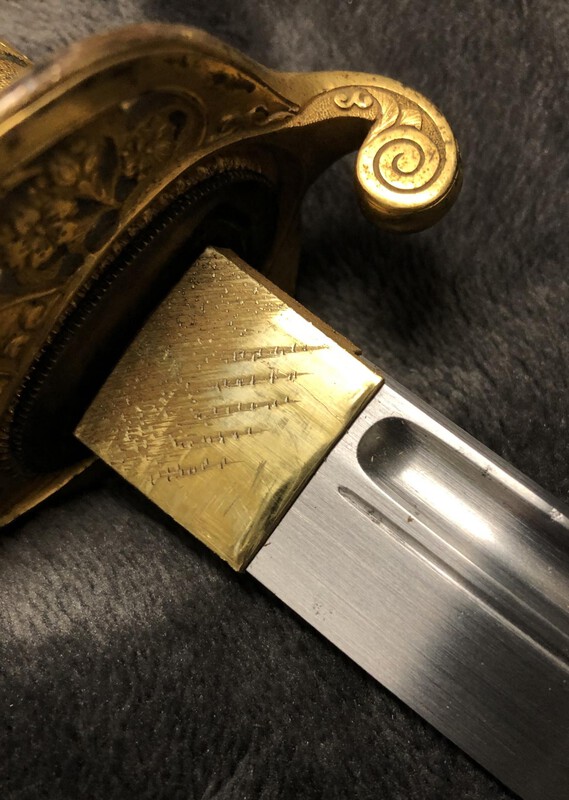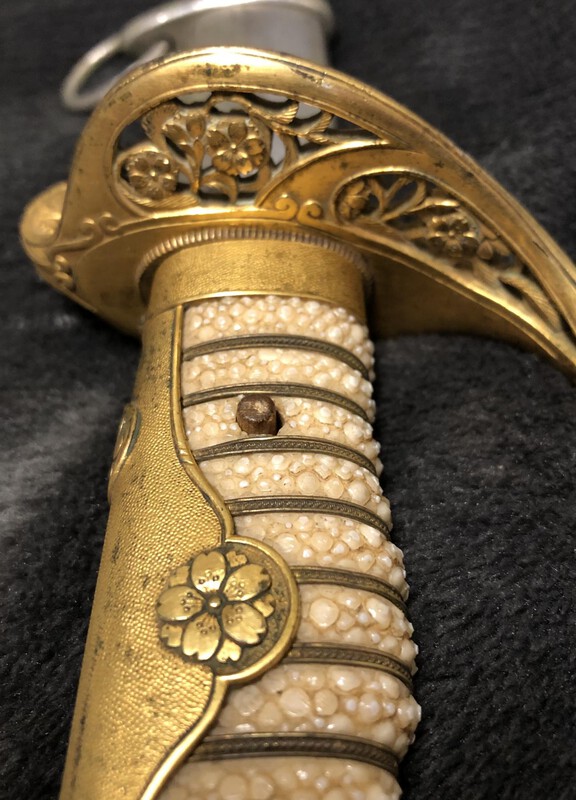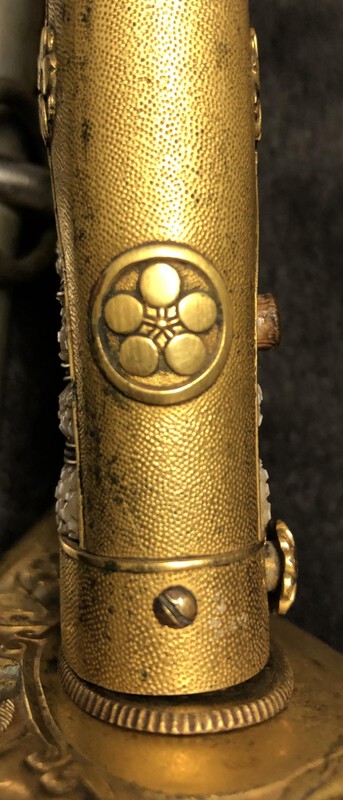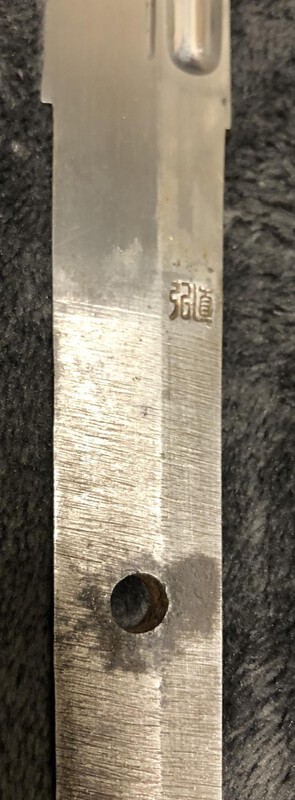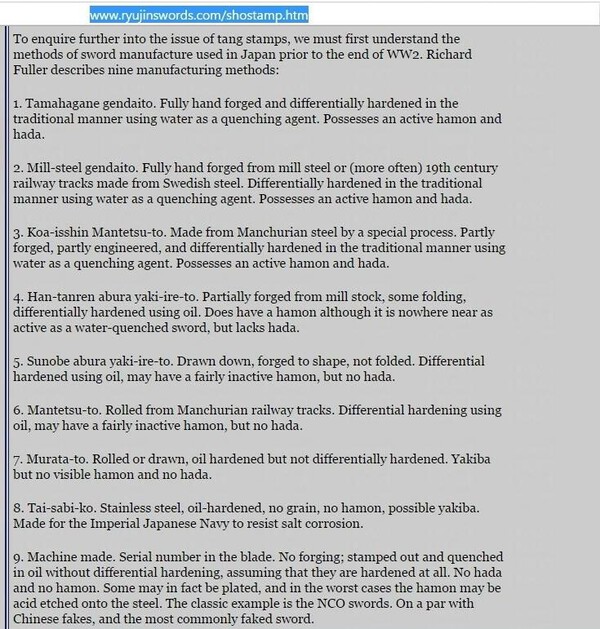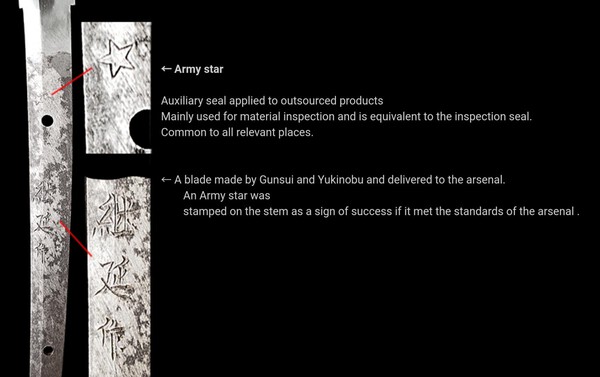-
Posts
13,004 -
Joined
-
Last visited
-
Days Won
155
Content Type
Profiles
Forums
Events
Store
Downloads
Gallery
Everything posted by Bruce Pennington
-
Stamps Document 5.0 attached. I had hoped to rewrite the introductory discussions on the Showa, Star, and Seki stamps, but really cannot do a better job than the guys already quoted. So, I elliminated some duplicative discussions and added personal notes about some dates. Reduced the overall size by 2 pages. Small additions to hotstamps and Type 95 steel fuchi stamps, and some small adjustments to the Mantetsu discussion. Many thanks to all who continue to assist in making the discoveries about this part of gunto history! Stamp 5.0.pdf
-

Show off your Nihonto book collection
Bruce Pennington replied to bigjohnshea's topic in General Nihonto Related Discussion
Wow, Alex! That's quite a collection of books! You should add it to the "What else do you collect" NMB thread: http://www.militaria.co.za/nmb/topic/29919-what-else-do-you-collect/?hl=%2Bwhat+%2Belse+%2Bcollect -

Shipping success
Bruce Pennington replied to Alex A's topic in Sword Shows, Events, Community News and Legislation Issues
Thanks Pete, I will look at this one too. -

Show off your Nihonto book collection
Bruce Pennington replied to bigjohnshea's topic in General Nihonto Related Discussion
Ha! Isn't that from a Harry Potter movie? If not, Hollywood needs to see it for future films! -

My Christmas Present finally Came In!
Bruce Pennington replied to Bruce Pennington's topic in Military Swords of Japan
Thanks Ed, I hadn't heard that before. -
Thanks guys. After seeing it again, I'm surprised I even had to ask! DOH! Maybe the 94 fittings had me all "love is blind"!
-
Thanks Chris. The auction pics aren't good enough to tell if the fittings are real, but seem to be. Too bad, I don't have a good Type 94 yet.
-
This one is in Type 94 fittings, which would be nice to have, but it's got a serial number stamped on the habaki (standard Chinese mistake), and I don't like the kanji on the nakago. This this legit or a bad fake? Auction here; https://www.liveauctioneers.com/item/80111194_japanese-sword Thanks for the help!
-
Here is the link to the Sale and Trade forum here at NMB. It works! I recently sold a gunto through that forum. The advantage is that you'll save yourself the bay-fees, and you'll know the gunto is going to a true collector who will honor the blade.
-

More information from Mr Komiya
Bruce Pennington replied to Dave R's topic in Military Swords of Japan
The context of the meeting minutes was in fact Type 95 production. “ 1945 April Production Report (Remarks column) "Recent bombing raids have destroyed production facilities at all suppliers (Suya, Kobe and Iida). Though progress is being made in relocating their production elsewhere, resumption of production is anticipated only from July onwards. Officer gunto production also lost all blade workshops, both within the arsenal and at private companies. Through desperate means, prospects for a supply of approximately 700 blades have been secured, but as facilities for exterior components also had been decimated, none can be assembled into complete swords. Regarding these exterior parts, we are currently calling on Association members such as Iida, Hinodeya and Sugito to work together in establishing new production facilities in Kofu City in Yamanashi Prefecture." -

My Christmas Present finally Came In!
Bruce Pennington replied to Bruce Pennington's topic in Military Swords of Japan
I don't think it's traditional. Ohmura calls them Zohei-to, which it think literally means "factory sword." But at the time, late 1800's to early 1900's, they were state of the art, and hardened edge. -
正恒 (Masatsune) (real name) 天池 鈴一郎 So, seems to have been made by the Japanese for the Manchurian navy! I know so little about that side of the war. I know there were actual Japanese personnel working with the collaborative forces, and they would have had their own gunto. I wonder if this is an example of that? Or were the Japanese making gunto for certain echelons of leadership on the Chinese side? Much of what we see are the swords made BY the collaborators, and the quality is obvious.
-
Very cool Dean! Both look fairly old, have you had anyone give you a guess on age?
-

My Christmas Present finally Came In!
Bruce Pennington replied to Bruce Pennington's topic in Military Swords of Japan
It's my first Kyu (probably my only). I love the work that went into the little details. (of course this is true for all Japanese metal-work)... -
Wifey decided to get me a real Christmas present this year - a really nice Type 8/19 with a Naohiro combat blade! It's the one John showed us on another thread, but don't worry, I didn't pay that price! Just a normal market price. I love the finely done double bohi. The blade is immaculate, and I like the double ashi. Enjoy:
- 25 replies
-
- 11
-

-

Help with this sword please
Bruce Pennington replied to Dean1981's topic in Military Swords of Japan
Dean, (sorry, we were typing at the same time!) I'm attaching a chart showing the NINE different ways blades were made. The simple answer to your question is that a lot of work can go into a blade, making an attractive hamon, etc, but if it was oil quenched, then we don't say "traditionally made." Even blades that were water-quenched, but used non-Japanese steel don't qualify for the label "traditionally made." Overall, your gunto on today's market will sell in the $900-1,200 USD range, depending upon your marketing skills, location, and buyer. -

Shipping success
Bruce Pennington replied to Alex A's topic in Sword Shows, Events, Community News and Legislation Issues
USPS contracts with whatever airline is leaving a US port city heading for the package destination. It is whomever is available that day. I've had 2 swords go through to Australia, but had 2 other rejected. After numerous phone calls the system was explained to me. My rejected ones had been sent to an Emirates airline flight. And Emirates won't ship kitchen knives much less a sword. I will look into EMS, thanks! -

Help with this sword please
Bruce Pennington replied to Dean1981's topic in Military Swords of Japan
Could we see a picture of the whole nakago (tang) with the handguard and fittings removed? I have a navy blade with similar file marks (a little better, but not much) and I have another navy blade with the end of the nakago roughly cut off. That one is a late-war, unsigned blade. I assumed it was a rush-job. Your fittings are really top-quality. Maybe some nihonto guys can comment on the hamon - I've heard the black line in it means oil quenched? -
Ok, got word back from George Trotter about that list. It came from his translation of the Ohmura pages. The way the text was written it sort of implied a "undated" but didn't actually say it. George feels the regulations provided by Morita-san, that clearly specifies that RJT smiths must sign AND date their blades is the definitive source. So, if anyone shows up with an undated, star-stamped blade it will actually be a surprise to us all. Although, Ohmura DOES show one on his site: http://ohmura-study.net/206.html
-
Trystan, and more pics of this stamp on the Mikasa kirk? Stephen - yeah, I can't tell either. I suspect it's a kakihan of a particuar smith, or maybe represents some tip-of-the-hat to a god, or something else. I'll put it down as "unknown" unless someone can clear it up for us.
-
OMG! Thanks Thomas. So that makes the Kanenori - Oct '39; Kanemichi - Dec '39; and likely means the Yoshimichi on the Christie's Auction suspect. If they read the date wrong like I did, it' probably a '39 too. They don't show the nakago, but simply write, in text, the date (likely given to them wrongly from the owner). If you guys paid me more I could take some Japanese language classes! But NOoooO! The 3 blades still change the status-quo as all previous discussions of the beginnings of the Showa stamp state that the earliest date ever seen was late 1940. So this walks it back a year.
-
Yes. There are sometimes differences from Ohmura-sans claims and what we are seeing in other sources. The post from George Trotter came from his translation of an Ohmura post on the subject. http://www.militaria.co.za/nmb/topic/5392-star-stamped-swords/ Maybe we will see someone come up with an example.
-
Read George Trotter's statment above. "2.Blades with mei (no date?) and star stamp made "on-site"." I don't know why the question mark is there, but the idea was that some RJT blades were made in the arsenal, while some were made in local shops. The blades without date were supposedly made in the arsenal. I don't know where George got this information. But if there are examples inline with this Item 2, then it would lend credence to it. The whole reason I bring this up, is because of Richard's observations showing only dated blades with star stamps.


